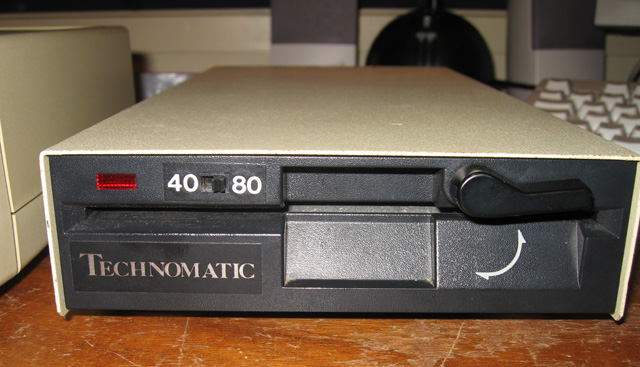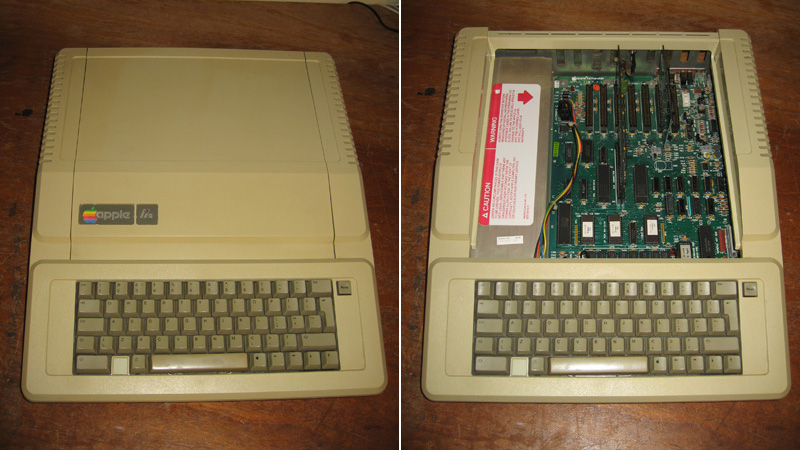Another Apple 8-bit adventure: Restoring two Apple IIe units (Part 5) - Disk Drives
Introduction
Having now restored the two Apple IIe units (the non-enhanced and the enhanced) and mixed and matched the parts it was now time to turn my attention to the disk drives.
Four drives came with the two computers. Not a neat set of doubles but rather a mish-mash of makes and models. In fact, one didn't appear to be an Apple-compatible drive at all!? They were dirty, dusty and untested. Still, if they worked (or if I could fix them) they would be a welcome addition to my drive library.
Clean and test
(a) The three Apple drives
The first of these was an Apple disk II drive, a classic model more commonly associated with the Apple II or II+. Next came a Franklin Ace drive, essentially a clone of the disk II. Finally there was an Unidisk drive, the only one usually associated with the Apple IIe (figure 1).
All drives were cleaned externally, the cases removed and any trash inside blown out or extracted. Next the drive heads were cleaned with a cotton bud soaked in isopropyl alcohol. Finally the rails were cleaned and lighly lubed with silicon grease. A check was made to see if the heads moved freely on the rails.
After all this was done and the drives reassembled, they were wired up (as Drive 2) to the IIe (standard) with a known good drive as Drive 1. They were then tested for speed with a hardware test disk. Both the disk II and the Franklin Ace drive showed a slow rotation and were adjusted accordingly. The Unidisk appeared fine. They were they then configured as Drive 1 and tested for booting and read/write activities.

Figure 1. Three Apple drives
Good news! All three drives worked flawlessly.
I was particularly pleased that the disk II unit was up and going. This would be a matching partner for the single one presently serving my Apple II Europlus.
(b) The non-Apple drive
This drive was a more conventional 300 rpm drive which would be more at home on a TRS-80 Model I/III, BBC (b) or CP/M machine. It came complete with an integrated PSU. Why it was sold on top of an Apple IIe is anyone's guess??! The lable said Technomatic but the boards inside suggest a rebranded TEAC drive. It did have an interesting feature: a switch on the front to toggle the drive from 40 tracks to 80 tracks (figure 2). Neat!

Figure 2. Technomatic 40/80 track switchable drive.
Opening the drive up revealed two heads, making the drive double-sided (Whoo hoo!).
After cleaning, this one was plugged into my TRS-80 model 1 for a check. The result was good news and bad news. The GOOD news was that the drive and the 40/80 track switch worked! I could copy and format disks in 40 and 80 tracks. The BAD news was that I could only do this for single sided disks. The second head didn't seem to work? Of course it could be that I just didn't know what jumpers to adjust to MAKE it work?
Oh well, I decided not to try to explore the jumpers or attempt a repair just now. Even as it is, the drive will make a useful addition to my BBC (b) micro whose DFS operating system only deals with one side of a disk.
Summary
The project was now over. Out of it had come two working Apple IIes (albeit one missing a working keyboard encoder IC at the time of writing). I also had four working disk drives.

Figure 3(a) The Apple IIe (standard or non-enhanced)

Figure 3(b) The Apple IIe (enhanced)
Not bad for $NZ10 and a bit of time.
Tez
9th May, 2011
Update 5th June, 2011 . A keyboard encoder has been found and installed in the II (enhanced). Sweet!
| Tweet |